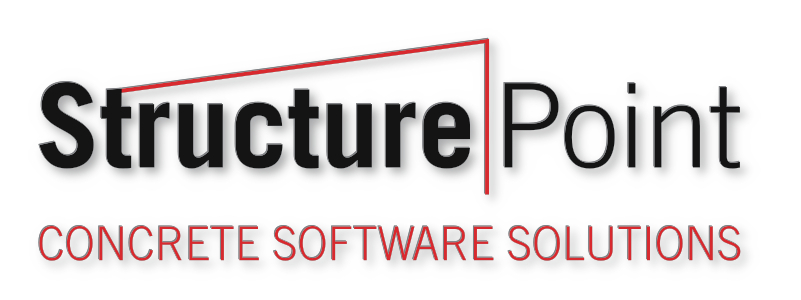FAQs
General | Network | spColumn | spSlab | spMats | spWall | spBeam | spFrame
Can I use this program to do two-way slab design?
No. Please use spSlab instead.
Which design codes does this program support?
The complete list of supported design codes can be found in Section 1.1 of spBeam Manual.
Does the program calculate long-term deflections?
Yes, a rigorous treatment of instantaneous (short-term) and time dependent (long-term) deflections is offered in spBeam. More information about long-term deflections calculations can be found in Section 2.3.10.3 of spBeam Manual.
Do I have to have two cantilevers in this program?
No. Cantilevers are optional.
Does spBeam take into account crack control requirements for maximum bar spacing?
Yes. More information about maximum bar spacing can be found in Section 2.5.1 of spBeam Manual.
Does spBeam support moment redistribution?
Yes. The program allows for redistribution of negative moments at supports. Only reduction in negative moments is considered. More information about moment redistribution can be found in Section 2.3.6 of spBeam Manual.
Does the program consider torsion?
Yes. Torsion analysis can be engaged for beam and one-way systems by selecting YES for Consider Torsion run option located in the Project Left Panel under Project command in the Ribbon. More information about torsion can be found in Section 2.3.9 of spBeam Manual.
Can the beam cross section vary for each span?
Yes.
What beam cross section does the program consider?
Rectangular, T section and L section.
Can spBeam design doubly reinforced beams?
Yes, Compression reinforcement can be engaged for beams by checking COMPRESSION REINFORCEMENT check box located in Design Options tab under Solve command in the Ribbon. More information about doubly reinforced beam design can be found in "Doubly Reinforced Concrete Beam Design" design example, Section 2.6.9 and Section 6.1.1 of spBeam Manual.
What live load pattern ratio should I use in spBeam? When to use load patterns in spBeam?
The analysis of floor systems requires the consideration of several loading configurations. For example, the two adjacent spans loaded may produce the maximum shear stress around a column, while the alternate spans loaded may produce the maximum flexural moments. To cover different loading scenarios the program generates live load case based on the different load patterns. More information about load patterns can be found in Section 2.3.3.4 in spBeam Manual.
How to disable load patterning in spBeam?
The user has the ability to select different value for the pattern ratio within the range 0-100%. If 0% is selected, then load patterning effects will be neglected. However, the pattern No. 1 with all spans loaded (as specified by the user) is always considered with full unreduced magnitude. More information about load patterns can be found in Section 2.3.3.4 in spBeam Manual.
Does spBeam consider discontinuous bars in cracked moment of inertia (Icr) and deflection calculations?
When Compression Reinforcement solve option is not checked, spBeam does not consider discontinuous bars in Icr and deflection calculations. When Compression Reinforcement solve option is checked, spBeam considers discontinuous bars in Icr and deflection calculations. More information about this topic can be found in "spSlab/spBeam Reinforcing Bar Arrangement Impact on Deflections" technical article.
When should I use slab elements versus beam elements in spBeam for modeling one-way systems?
In spBeam, the choice between slab and beam elements depends on how the structural member is intended to behave. Design codes such as ACI 318 and CSA A23.3 set different requirements for minimum reinforcement, shear strength, and deflection in slabs versus beams. Therefore:
- Use slab elements for components that are wide and shallow, behaving primarily as slabs.
- Use beam elements for structural members specifically designed as beams with concentrated reinforcement and stirrups.
As a rule of thumb for cross-section proportions:
- 0.3 ≤ b/h ≤ 2 → typical beam cross-section.
- 2 < b/h ≤ 3 → transition zone between beam and slab behavior.
- b/h > 3 → generally considered slab cross-section.
In the transition zone, span length and applied loading may influence the decision, especially regarding one-way shear demand and the need for stirrups (beam action) versus slab action (without stirrups).
For more details, refer to Section 4.1.5.7 One-Way Slab System Considerations in the spBeam Manual.
